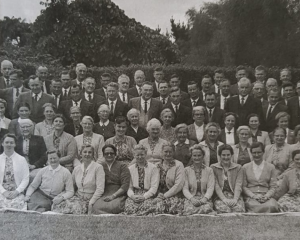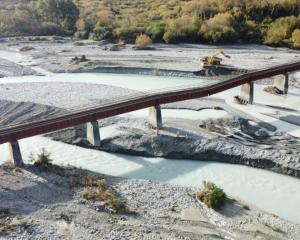The navy's multi-role ship Canterbury has racked up a $250,000 repair bill after breaking down on its way to a Brisbane dry dock for maintenance.
It was the latest in a series of problems to strike the 9000-tonne sealift and amphibious support ship since it was commissioned into the navy in Melbourne in 2007.
Canterbury was heading to Brisbane in June when the turbocharger on its starboard engine failed shortly after it left the Devonport naval base in Auckland, forcing the ship back to Devonport for repairs.
The navy said the repairs took a week but when the ship put back to sea to resume its voyage to Brisbane, it had another engine breakdown at sea.
On the second breakdown the ship's captain ordered the engine to be shut down and the ship continued on one engine while engineers worked to fix an injector blockage.
The navy said the cause of the turbocharger problem, which forced the ship back to the Devonport Naval Base, was still being investigated by the manufacturer.
"The cost of the repair was approximately $250,000 with about $200,000 of this cost being replacement parts," said a navy spokesperson.
The navy said the manufacturer was still investigating if the original parts could be repaired and returned to navy stores as spares.
The breakdown meant Canterbury was a week late to dock in Brisbane but the time was made up in dock with staff working long hours and six days a week and the ship returned to New Zealand on schedule. In dock the propellers, shafts and rudders were removed, valves were replaced and the hull was painted.
The breakdown was the latest in a series of mishaps to strike the ship since it was commissioned as part of the $500 million Project Protector scheme which saw the navy get seven news ships -- Canterbury, two offshore patrol vessels and four inshore patrol vessels.
On its maiden voyage the ship was hit by big seas in the Bay of Plenty and lost one of its rigid hulled inflatable boats (RHIB) when it was washed out of its storage alcove in the hull.
Later in 2007 a member of the ship's company, 22-year-old Byron Solomon, died when the RHIB he was in capsized as it was being lowered during an exercise near Cape Reinga off the Northland coast.
The problem was found to have been caused by a faulty shackle holding the RHIB's bow rope to the ship when the RHIB was launched. The shackle released prematurely and inexplicably, causing the bow of the RHIB to drop into the water, leading to the capsize.
The RHIB's lowering system also failed to release and Mr Solomon was trapped under the overturned RHIB when it could not be winched back onto the ship.
Both the shackles and the RHIB were replaced with different models.
The $130 million ship had been plagued by problems and after a British marine expert inspected the ship, it was estimated the navy would need to spend $20 million to make it fully seaworthy so it could perform the tasks the navy expected of it.
The navy also decided to replace the two landing craft on the ship after problems with weak bow ramps and stability.
The government negotiated a deal with, BAE Systems, the Australian builders, who paid $85 million as its share of fixing a range of faults, including the landing craft.












